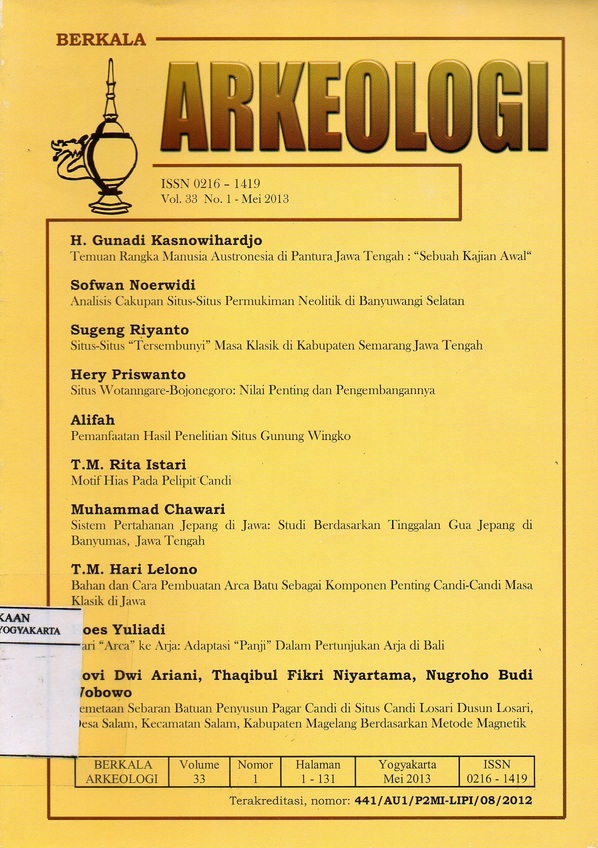MOTIF HIAS PADA PELIPIT CANDI
Main Article Content
Abstract
Decorative motifs found in Hindu and Buddhist temples, usually are depicted on almost all parts of buildings. Decorative motif in the form of reliefs consisted of geometric ornaments, nature, plants, animals, and humans. Relief there is a series of panels connected to one another with stories taken shadow-play epic. Fables are also often depicted. Stories with animals as the main character containing morale for human’s life. Temple has 3 main parts, namely the base, body, and roof of the temple. In addition there is also a section called cornice and plinth. This serves as a separator between the three parts of the temple. To add beauty and give the impression of a slender building, then on cornice and plinth was carved decorative motif that surrounds the temple. The various decorative motifs will be discussed at length in this paper.
Article Details

This work is licensed under a Creative Commons Attribution-NonCommercial-ShareAlike 4.0 International License.
References
Ayatrohaedi, dkk. 1981. Kamus Istilah Arkeologi I. Jakarta: Pusat Pembinaan dan Pengembangan Bahasa. Departemen Pendidikan dan Kebudayaan.
Atmadi, Pramono. 1994. Some Architectural Design Principles of Temple in Java. Yogyakarta: Gadjah Mada University Press.
Atmosudiro, Sumijati (editor) dkk. 2008. Jawa Tengah Sebuah Potret Warisan Budaya. Prambanan, Klaten: Balai Pelestarian Peninggalan Purbakala Jawa Tengah dan Jurusan Arkeologi Fakultas Ilmu Budaya Universitas Gadjah Mada.
Dumarçay, Jacques. 2007. Candi Sewu dan Arsitektur Bangunan Agama Buddha di Jawa Tengah. Jakarta: Kepustakaan Populer Gramedia.
Hoop, A.N.J. Th. Van der. 1949. Ragam-ragam Perhiasan Indonesia. Bandoeng: Koninklijk Bataviaasch Genootschap van Kunsten En Wettenschappen.
Istari, Rita T.M. 2011. Ragam Hias Candi-candi di DIY, Jawa Tengah, dan Jawa Timur. Laporan Penelitian Arkeologi. Yogyakarta: Balai Arkeologi Yogyakarta.
Siagian, Renville. 2000. Candi. Sebagai Warisan Seni dan Budaya Indonesia. Yogyakarta: Gadjah Mada University Press.
Sunaryo, Aryo. 2009. Ornamen Nusantara Kajian Khusus Tentang Ornamen Indonesia. Semarang: Effhar Offset.

